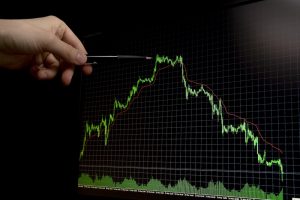 Tools such as stock charts are a critical part of your armory when you learn how to trade CFDs, become a forex trader or learn to trade in stocks. It is as essential for newcomers to trading as it is for seasoned traders, with the only difference being the level of analysis that you are able to extract from your chosen tool.
Tools such as stock charts are a critical part of your armory when you learn how to trade CFDs, become a forex trader or learn to trade in stocks. It is as essential for newcomers to trading as it is for seasoned traders, with the only difference being the level of analysis that you are able to extract from your chosen tool.
The more tools you master, the better. One useful instrument is a technical analysis tool from Japan called the Ichimoku Indicator. The idea is that by looking at this tool – whose name roughly translates to mean “one glance” – for a short while, you will be able to have your finger on the pulse of the market. Here’s a basic guide to how it works.
The lines
There are five lines with five Japanese names. The coloured space between them is called the cloud. You can tell if the market is more bearish or bullish by looking at the colour. All the lines are either moving averages or the actual price, which means they naturally synergize with a price chart.
The lines with larger periods, Kijun and Senkou Span B, depict the medium-term trend prognosis, while the lines with a smaller period, Tenkan and Senkou Span A, specify a short-term trend. The line called Chinkou Span plays the role of momentum oscillator because it lets you compare the current price to the price from some time ago. When it differs too much from the price chart, a correction usually takes place.
The settings
This indicator was devised prior to World War II, when Japan subscribed to a six-day work week. Consequently, the first part of the classical settings is nine, for one-and-a-half work weeks. The second part is 26, to correspond with the number of working days in a month, while the third one is 52, to cover two months. These settings (9-26-52) still suit modern weekly timetables because there are 52 weeks in a year.
Trends
You must look at the right side of the cloud to pick up on a trend, as the cloud is moved to the right. If the cloud is bullish, the market is bullish. How would you know this? You’ll note that the price is above the cloud and expanding, and that the Chinkou Span is above the price.
Key indicators to note
Keep an eye on:
Strategies based on the indicator
Every trader needs to have solid trading strategies. Here are the ones linked to the indicator:
This Ichimoku Indicator allows you to assess a trend and determine how strong it is with precision while spotting support and resistance bands. There are also some useful strategies you can pin to it. It is a good idea to add this tool to the chart so you can get a full picture at once.